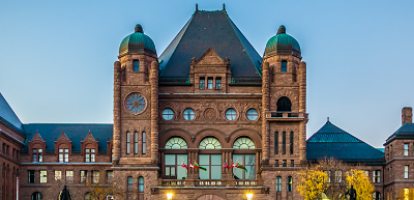From: Rosalie Wyonch
To: Ontario Taxpayers
Date: April 4, 2018
Re: Healthcare spending: ambition exceeds capacity
Ontario’s 2018 budget - entitled “A Plan for Care and Opportunity” – focuses heavily on healthcare in all its forms. It encompasses initiatives and investments in hospitals, homecare, pharmacare, mental health and compassionate end-of-life care. Each proposal for expansion may have individual merits, but the bottom line is that they represent an increase in spending of $5 billion in 2018/19, relative to last year’s budget. As a result, program spending in the health sector is projected to grow 4.3 percent annually from $61.3 billion in 2018/19 to $66.6 billion in 2021.
There are some welcome investments in all that spending. The budget proposes to invest $2.1 billion over the next four years in expanding access to mental health and addiction services. Canada spends less on prevention and early interventions to mental health and addiction problems than most developed nations. This budget would increase access to publicly funded psychotherapy and provide every high school in Ontario with access to mental health support. The government is also investing in counselling, therapy and walk-in clinics and allocating needs-based funding for community based child and youth mental health services. There is also an effort to provide First Nation and Métis children with community designed and delivered preventative mental health services. All of these initiatives could improve access to care and allow people to access services for mental health and addiction issues before they become chronic problems.
Overall, these community-based programs and preventative interventions represent a welcome integration of services and investment in early stage treatments, which can reduce future costs by preventing addiction and mental health issues from becoming chronic conditions that effect individuals in every aspect of their lives. A planned integration of health and social services with legal services could similarly help prevent re-offending or continued disenfranchisement from society.
Some other investments in healthcare are less innovative. Funding for hospitals is projected to increase by 4.6 percent in 2018/19 to $19 billion, representing 31 percent of the total healthcare sector. This money will pay for refurbishments and new construction on hospitals across the province. It is unfortunate that the funding for hospitals does not mirror the other healthcare investments in integrated care that could improve overall efficiency of the health system while also improving service delivery.
The projected growth in healthcare spending exceeds economic and revenue growth meaning that healthcare will consume a larger and larger share of total program spending. While individual programs and investments have their merits and some are actually quite good ideas, the fiscal sustainability of the healthcare system in Ontario remains suspect. Instead of increasing spending more in all areas of healthcare, the government needs to develop each initiative with a dual objective of improving service delivery and improving efficiency in the overall system.
Rosalie Wyonch is a Policy Analyst at the C.D. Howe Institute.
To send a comment or leave feedback, email us at blog@cdhowe.org.





